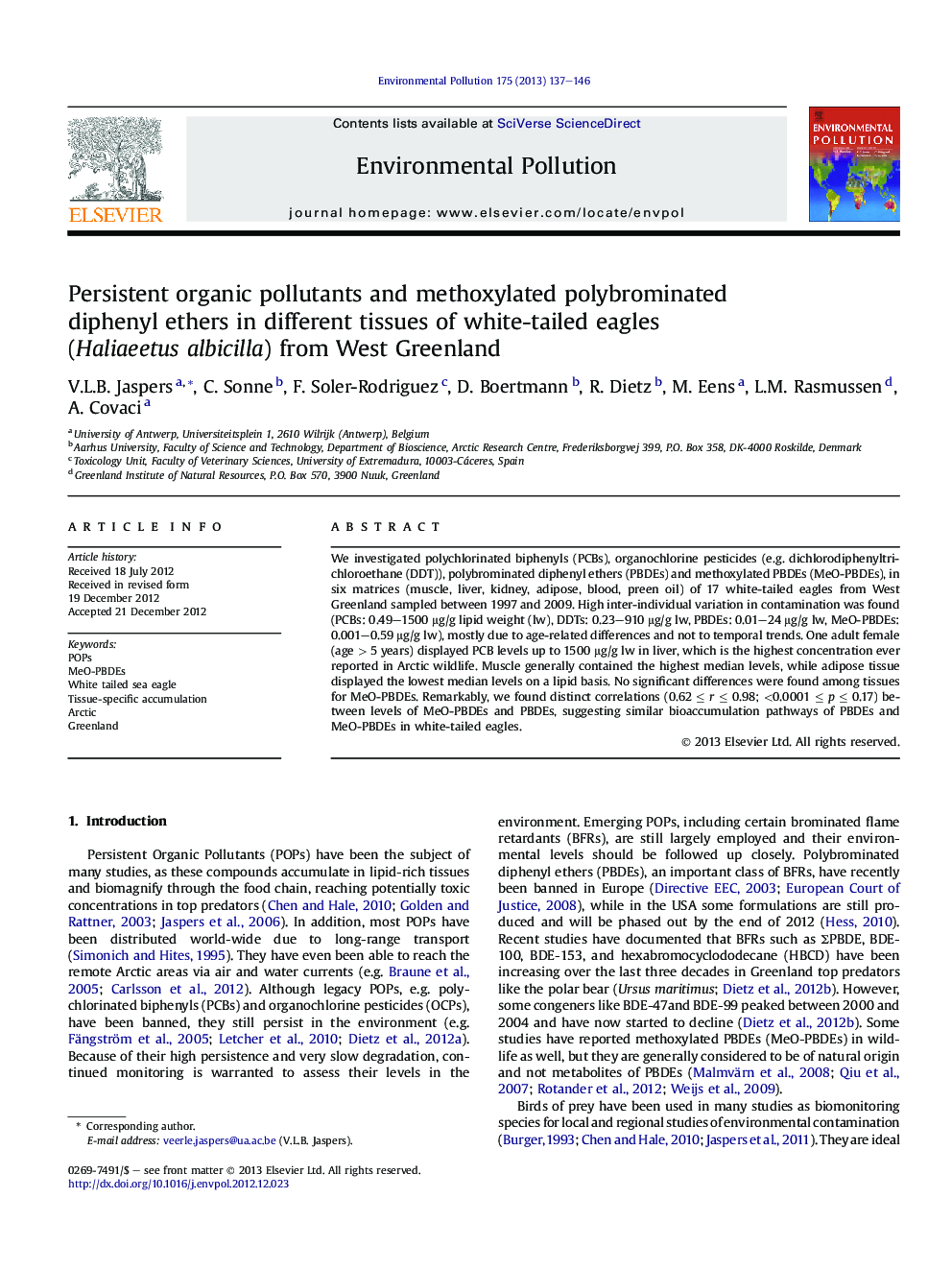| Article ID | Journal | Published Year | Pages | File Type |
|---|---|---|---|---|
| 4424595 | Environmental Pollution | 2013 | 10 Pages |
We investigated polychlorinated biphenyls (PCBs), organochlorine pesticides (e.g. dichlorodiphenyltrichloroethane (DDT)), polybrominated diphenyl ethers (PBDEs) and methoxylated PBDEs (MeO-PBDEs), in six matrices (muscle, liver, kidney, adipose, blood, preen oil) of 17 white-tailed eagles from West Greenland sampled between 1997 and 2009. High inter-individual variation in contamination was found (PCBs: 0.49–1500 μg/g lipid weight (lw), DDTs: 0.23–910 μg/g lw, PBDEs: 0.01–24 μg/g lw, MeO-PBDEs: 0.001–0.59 μg/g lw), mostly due to age-related differences and not to temporal trends. One adult female (age > 5 years) displayed PCB levels up to 1500 μg/g lw in liver, which is the highest concentration ever reported in Arctic wildlife. Muscle generally contained the highest median levels, while adipose tissue displayed the lowest median levels on a lipid basis. No significant differences were found among tissues for MeO-PBDEs. Remarkably, we found distinct correlations (0.62 ≤ r ≤ 0.98; <0.0001 ≤ p ≤ 0.17) between levels of MeO-PBDEs and PBDEs, suggesting similar bioaccumulation pathways of PBDEs and MeO-PBDEs in white-tailed eagles.
Graphical abstractFigure optionsDownload full-size imageDownload as PowerPoint slideHighlights► POPs and MeO-PBDEs were analysed in six tissues of white-tailed sea eagles (WTSE). ► Legacy POPs, PBDEs, 2′-MeO-BDE 68 and 6-MeO-BDE 47 could be quantified in all tissues. ► Levels of MeO-PBDEs and PBDEs correlated, suggesting similar bioaccumulation pathways. ► MeO-PBDEs in WTSEs might originate from natural sources and metabolism of PBDEs in fish. ► Further transformation and/or excretion in WTSEs could explain low MeO-PBDEs levels.
